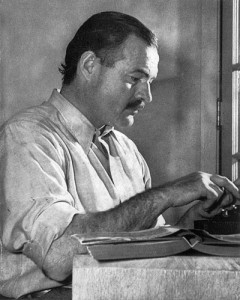The sampling of facts, anecdotes and personal tragedies presented here represent a much larger well of material that could easily comprise a large book.
1938: After observing pigs shocked into seizures and senselessness in a Rome slaughterhouse, Italian psychiatrist Ugo Cerletti uses the same method on a human being. After the first shock, his subject screams, “Not another one! It’s deadly!”

1938-1940: German psychiatrist Lothar Kalinowsky brings ECT to France and England. Expelled from England, he lands in the United States and introduces ECT to America through Columbia University and the New York State Psychiatric Institute.
1940s: In Nazi euthanasia facilities, hundreds are killed with electroshock machines.
1943-1950: Incarcerated in a series of psychiatric institutions, Frances Farmer receives ECT against her will. The gifted actress never regains her creative abilities and dies at 56.
1949: At age 26, Judy Garland undergoes ECT. Several suicide attempts follow. Her biographer, Gerold Frank, writes in Judy: “[S]he had no respect for psychiatrists; she had seen more than a dozen of them and they had all failed her.”
1954-1962: Electroshock is used to torture prisoners of the French during the Algerian War.
1956: Fourteen-year-old Lou Reed is forced to undergo shock treatments. He later reflects on the experience in the song “Kill Your Sons”: “All your two-bit psychiatrists are giving you electroshock … Every time you tried to read a book you couldn’t get to page 17 ’cause you forgot where you were. So you couldn’t even read.”
1957: Psychiatrist Ewen Cameron describes to the 2nd World Congress of Psychiatry what happens to those receiving ECT: “There is complete amnesia for all events of
his life.”

1960-1961: Ernest Hemingway receives ECT at the Mayo Clinic under the supervision of psychiatrist Howard Rome. On July 2, 1961, shortly after returning home, he kills himself with his favorite shotgun, but not before he had written: “What is the sense of ruining my head and erasing my memory, which is my capital, and putting me out of business? It was a brilliant cure but we lost the patient.”
1969: Hungarian refugee Victor Gyory is taken to a Pennsylvania institution, held in isolation, and forced to undergo electroshock. Psychiatrist Thomas Szasz determines that Gyory was diagnosed “schizophrenic” because he could not speak English. Through the efforts of members of the Church of Scientology and Dr. Szasz, Gyory is released. This leads to the founding of the Citizens Commission on Human Rights by the Church and Dr. Szasz.
1976: California passes a law banning ECT without the consent of the recipient and prohibiting its use on children under age 12.
1982: Voters in Berkeley, California, make administration of ECT a misdemeanor in the city, punishable by up to six months in jail and a $500 fine.
1993: Texas bans ECT on children under age 16 and requires that any death occurring within two weeks of ECT be reported to the state Department of Mental Health and Mental Retardation.
2001: University of Pennsylvania neuroscience professor Peter Sterling testifies at a hearing on shock before the
New York Assembly Standing Committee on Mental Health, Mental Retardation, and Developmental Disabilities: “ECS [electro-convulsive shock] unquestionably damages the brain.” That same year, ECT advocate Harold Sackeim admits in the Journal of ECT that “virtually all patients experience some degree of persistent and, likely, permanent retrograde amnesia.”
2003: An ECT Fact Sheet published by the U.S. Mental Health Foundation states, “Shock damages the brain, causing memory loss and disorientation that creates an illusion that problems are gone, and euphoria, which is a frequently observed result of brain injury.”
2005: The World Health Organization recommends that ECT never be used on children.
December 2010: A comprehensive review by Professors John Read and Richard Bentall (now both at the University of Liverpool) of more than 100 studies and reports concerning ECT concludes, “Given the strong evidence of persistent and, for some, permanent brain dysfunction … and the evidence of a slight but significant increased risk of death, the cost-benefit analysis for ECT is so poor that its use cannot be scientifically justified.”
January 2011: A U.S. Food and Drug Administration panel hears testimony on whether to remove ECT devices from the “high risk” category. A majority of members favor keeping the machines classified as “high risk.”
March 2012: A study in Proceedings of the National Academy of Science reports a considerable “decrease in functional connectivity” between the prefrontal lobes of the brain and other parts of the brain following ECT.
April 2013: The state of Connecticut passes a law to require informed consent before ECT is administered to anyone.
September 2013: Following an investigation into ECT’s use in psychiatric facilities, the regional government of Sicily bans ECT throughout the island.
October 2014: Legislation banning ECT on those under 14 passes the Parliament of Western Australia. The law imposes a $15,000 fine on anyone performing ECT on a child under 14.